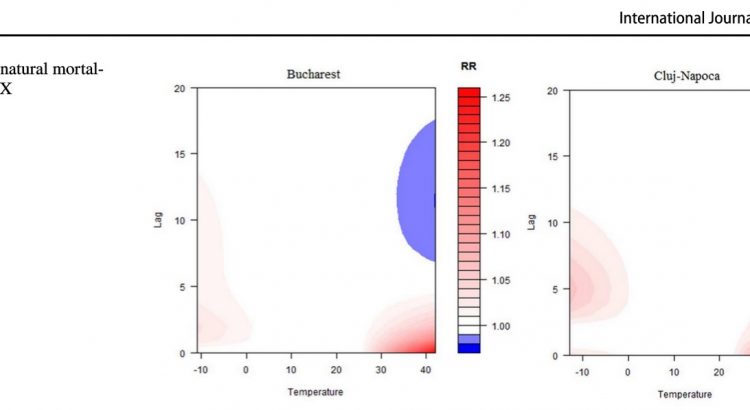Andreea-Sabina Scripcă, Fiorella Acquaotta, Adina-Eliza Croitoru, Simona Fratianni
Int J Biometeorol (2021). https://doi.org/10.1007/s00484-021-02206-w
Abstract
The impact of extreme weather conditions on humans is one of the most important topics in biometeorology studies. The main objective of this study is to analyze the relationship between temperature-related weather conditions and natural mortality in the five most populated cities of Romania, namely, Bucharest, Cluj-Napoca, Constanța, Iași, and Timișoara. The results of this study aim to bridge a gap in national research. In the present paper, we used daily natural mortality data and daily minimum and maximum air temperatures. The distributed lag nonlinear model (DLNM) allowed us to identify weather conditions associated with natural mortality. The most important results are as follows: (i) a higher daily mortality is related to a high frequency of heat stress conditions; (ii) a higher maximum temperature increases the relative risk (RR) of natural mortality; (iii) the maximum number of fatalities is recorded on the first day of high-temperature events; and (iv) individuals much more easily adapt to cold stress conditions. The main conclusion in this study is that the inhabitants of the most populated cities in Romania are more sensitive to high-temperature stress than to low-temperature stress.
Keywords Extreme temperature· Natural mortality· Relative risk· Bioclimatic stress· Romania
